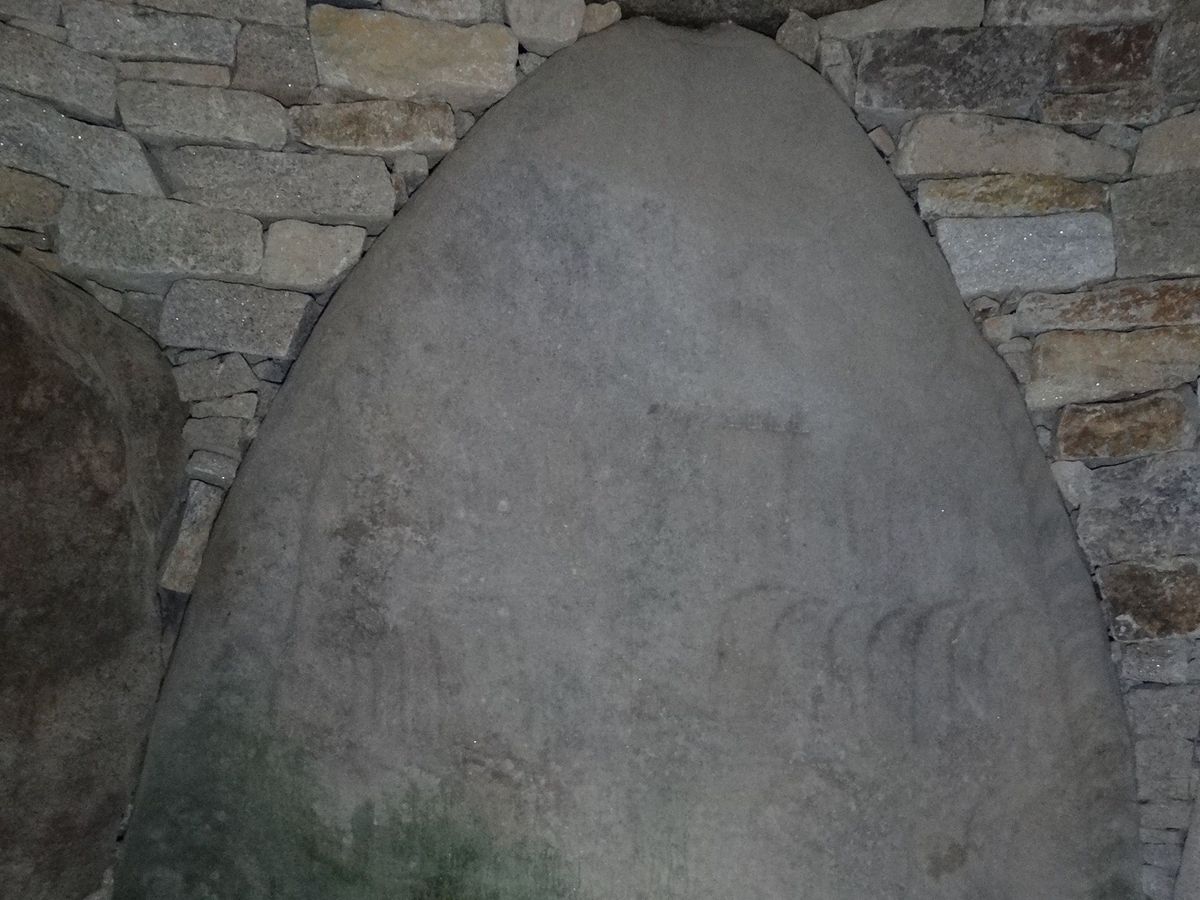Locmariaquer megaliths
This site includes three separate monuments: the Grand Menhir, the Er Grah tumulus, and the Table des Marchands. These three monuments were purchased by the French state in the late nineteenth century and later listed as historic monuments: the Table des Marchands in 1889, and the Er Grah tumulus and Grand Menhir in 1935. They were not built in a single construction phase, and the most recent excavations in the late 1980s and early 1990s have revealed the complex chronology of the southern Morbihan megalithic sites.
The Broken Great Menhir
The Grand Menhir is a large, 20-metre long orthogneiss stele, lying on the ground and broken into four pieces. Orthogneiss is a material that is not found on Locmariaquer point. It comes from an average of 10 kilometres away, requiring it to be transported by waterway (the rivers that formerly ran where the Gulf of Morbihan now is). The monumental appearance this menhir must have had when it was standing has fired people’s imaginations for two centuries, so much so that there have been many projects to erect it again, although none of them have come to anything. A project to move it with a view to it being presented at the 1897 International Exposition sparked a huge outcry in the local press.
The Grand Menhir forms the end of an alignment of 19 steles, of which only the locations were found during excavations; these locations have now been marked out on the ground. This stone row is known to have been dismantled in the Neolithic Era, since some of its components were reused in the construction of the Gavrinis cairn and the Table des Marchands.

©EmilieHeddebaux/PaysagesdeMégalithes
The Table des Marchands
The Table des Marchands was excavated in 1811 by a Mr Renaud from an Auray company formed to exploit the gold from the dolmens and Count Maudet de Penhouët. The operation left the internal structure – the dolmen – exposed, without its outer covering; this image was popularised throughout the nineteenth and early twentieth centuries. After the excavations in the 1980s and 1990s to protect the structure and help improve our understanding of it, restoration work was carried out. A cairn – the remains of which were discovered extending over more than a metre in some places – was reconstructed above the dolmen. The monument is unique due to its engravings on the ceiling, which connect it to the Gavrinis monument, and due to the stele at the rear of the chamber, sculpted and engraved in a block of sandstone, which is one of a kind.
Er Grah tumulus
At the western end of the site lies the long earth and stone Er Grah tumulus. This is the largest monument on the site, measuring around 140 metres long and 30 metres wide. It comprises a central cairn enclosing a cist grave, with silt extensions to the north and south held in place by low stone walls.
This monument is older than the Table des Marchands, and was built to bury a single individual. A large variscite pendant was found here, now in Carnac Museum.

©EmilieHeddebaux/PaysagesdeMégalithes


